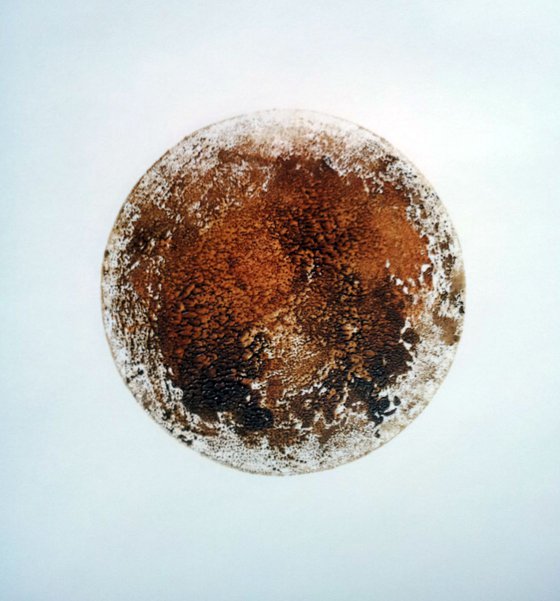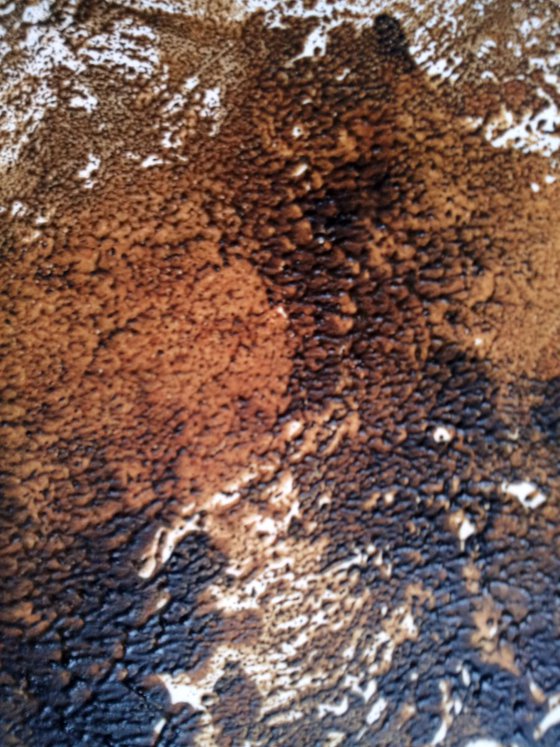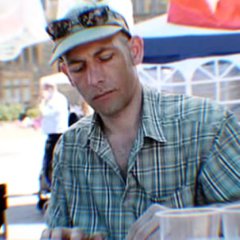- By medium
- By subject
- By budget
- Sales
- Gift cards
- Discover all art
- Artists
- Editors’ picks
- Ideas
Artwork description:
A series of monotypes using rock pigments collected from the seaside town of Watchet in West Somerset, U.K. and colours only available through industrial means. This explores ideas on the Anthropocene Age and our interventions with the landscape, extracting and re-introducing materials after manufacturing.
The series explores working collaboratively with the material and approaching the work through not having any pre-conceived idea before making the marks. The pigments are made into printing ink using medium and applied to the printing surface with a large pallet knife.
The proposition explored in this particular practice is the exploration of the space between initial chemical release in the mind towards thinking and the act of action before fully forming an idea in the mind. The action of the mark is made quick and direct to the surface, capturing the muscle action from the unconscious thought - seeing if it is possible to build layers of pre-thinking into an image to reveal something un-affected by any form of concept or conceptualised idea.
Through working with the material I am exploring an area I am becoming more involved with concerning epigenetic memory and inter-generational transference of memory revealed through the marks we leave behind - in this instance through the marks made in response to material, surface and action.
During the making of this image I was listening to Coleridge's Kubla Khan read by Benedict Cumberbatch on loop via YouTube, allowing it to wash over my mind as I worked on this print.
Materials used:
Handmade printing ink on Cartridge Paper Stock
Tags:
#poetry #print #printmaking #history #monotype #romanticism #layering #coleridge #printing #handmade ink #relayering #plantaryColeridge (2016) Print
by Adam Grose MA PGCE
19 Artist Reviews
Now £165.75 £195
15% off sale. Sale ends in 1 day 1 hour
- Print on Paper
- From a limited edition of 2
- Size: 34 x 34 x 0.1cm (unframed) / 16 x 16cm (actual image size)
- Signed and numbered on the front
- Style: Organic
- Subject: Abstract and non-figurative
Loading
Artwork description
A series of monotypes using rock pigments collected from the seaside town of Watchet in West Somerset, U.K. and colours only available through industrial means. This explores ideas on the Anthropocene Age and our interventions with the landscape, extracting and re-introducing materials after manufacturing.
The series explores working collaboratively with the material and approaching the work through not having any pre-conceived idea before making the marks. The pigments are made into printing ink using medium and applied to the printing surface with a large pallet knife.
The proposition explored in this particular practice is the exploration of the space between initial chemical release in the mind towards thinking and the act of action before fully forming an idea in the mind. The action of the mark is made quick and direct to the surface, capturing the muscle action from the unconscious thought - seeing if it is possible to build layers of pre-thinking into an image to reveal something un-affected by any form of concept or conceptualised idea.
Through working with the material I am exploring an area I am becoming more involved with concerning epigenetic memory and inter-generational transference of memory revealed through the marks we leave behind - in this instance through the marks made in response to material, surface and action.
During the making of this image I was listening to Coleridge's Kubla Khan read by Benedict Cumberbatch on loop via YouTube, allowing it to wash over my mind as I worked on this print.
Materials used:
Handmade printing ink on Cartridge Paper Stock
Tags:
#poetry #print #printmaking #history #monotype #romanticism #layering #coleridge #printing #handmade ink #relayering #plantary14 day money back guaranteeLearn more








